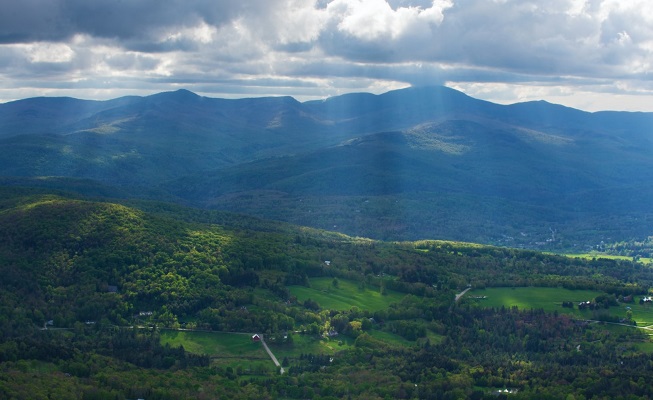Much like in New Hampshire, if a bill sits on a governor’s desk for too long, it passes without a signature. Passed without action and allowed to become law. It is a form of Gubernatorial protest without much protest.
Related: Vermont: A State That Exists Because of a Militia Just Banned Them.
In Vermont, the Democrat majority legislature can easily override “republican” Phil Scott’s veto – and he’s not exactly against much of what the legislature sends to his desk, so the recent land grab bill is officially on the books. Vermont must set aside 30% of the State by 2030 and 50% by 2050, contrary to another progressive project, and will (at some point) require the legislature to change the definitions of some words.
As passed, this Bill’s goals – at least on paper – are to preserve,
- Ecological reserve area: land that is managed with as little human interference as possible.
- Biodiversity conservation area: land managed in a way that supports biodiversity of plants and animals.
- Natural resource management area: land managed sustainably for timber harvest or regenerative agriculture.
Vermont’s California-inspired energy plan will require the State to buy or generate significant amounts of wind and solar electricity. Land conservation grabs and the necessary build-out of green infrastructure cannot co-exist unless Vermont outsources environmental destruction to meet its needs. Someone somewhere will have to give up their ecological reserves, biodiversity, and regenerative agriculture so the “Green” Mountain boyx’ can reach their emissions targets and keep a few lights burning.
Never fear. “The governor asserted in a statement about his decision that the law leaves room for the Agency of Natural Resources to interpret conservation broadly.”
Rep. Amy Sheldon, a Democrat from Middlebury who chairs the House Energy and Natural Resources Committee, says Vermont will only need to get smarter about conservation in the face of climate change.
“This idea of having a goal set in statute for conservation, to me, was always complementary and supportive of our statewide goals of compact village centers surrounded by rural working lands and natural areas,” Sheldon said.
The Chair of the “Energy and Natural Resource Committee” has embraced Newspeak.
Locking up land from development in the name of the biosphere sounds great, but Vermont’s wind and solar-driven future are at odds with the advertised intentions. So, what if the land grab is a play for something else? The State says it is preserving the wilderness in the name of natural resource management, and we know that the definition of conservation is broad. Wind and sunshine are natural resources.
When they can’t keep the lights on, or the heat pumps pumping (in January), selling or leasing some of that state-conserved land to tap into those natural resources won’t be that difficult. And if they are violating the shadows of the penumbras of conservation resource management, a future legislature can redefine the terms of the deal.
They’ll already have the land. And while affordable energy will be in short supply, developers and lobbyists who want to feed on the government’s big green through will be abundant.
Added after publication: I forgot to note that, yes, this is meant to force people closer to the 15-minute cities scheme. Make open land less available for you to own or use. Cram you into increasingly smaller areas they can control. But to keep that green dream, they’ll still need to cover the land with infrastructure. It is naive to think that’s not how it ends if this is allowed to continue. And you’ll still be left sitting in the dark.
